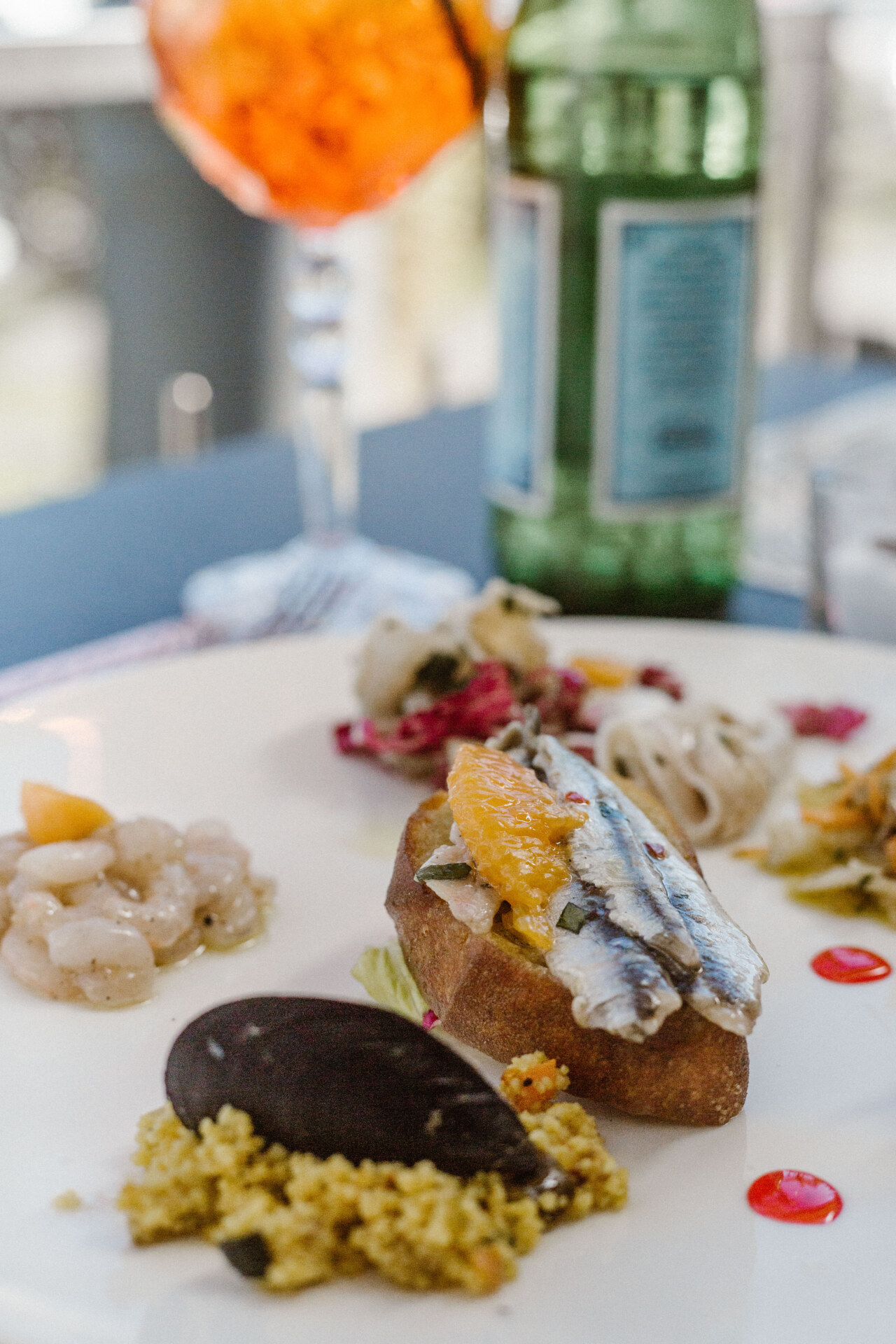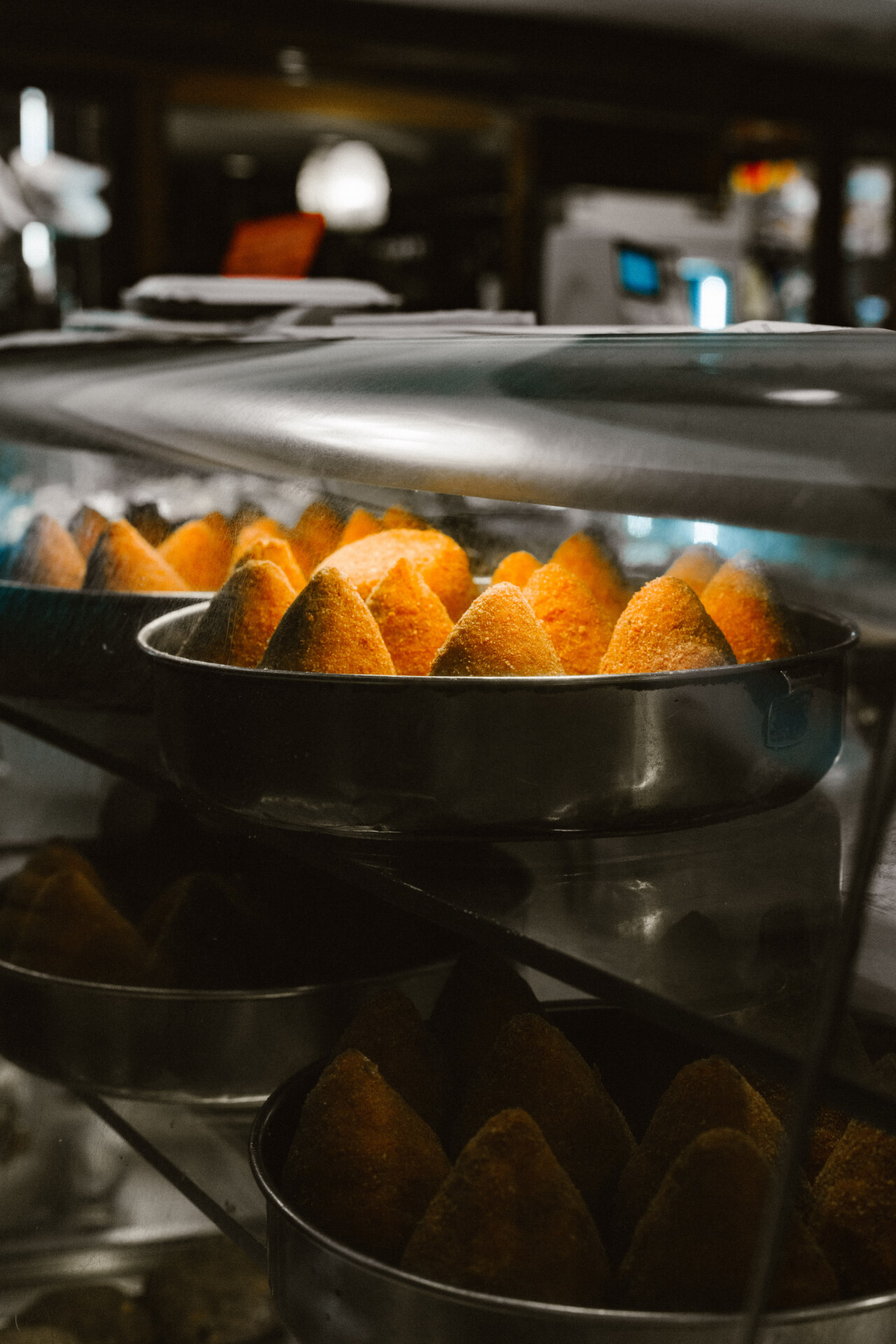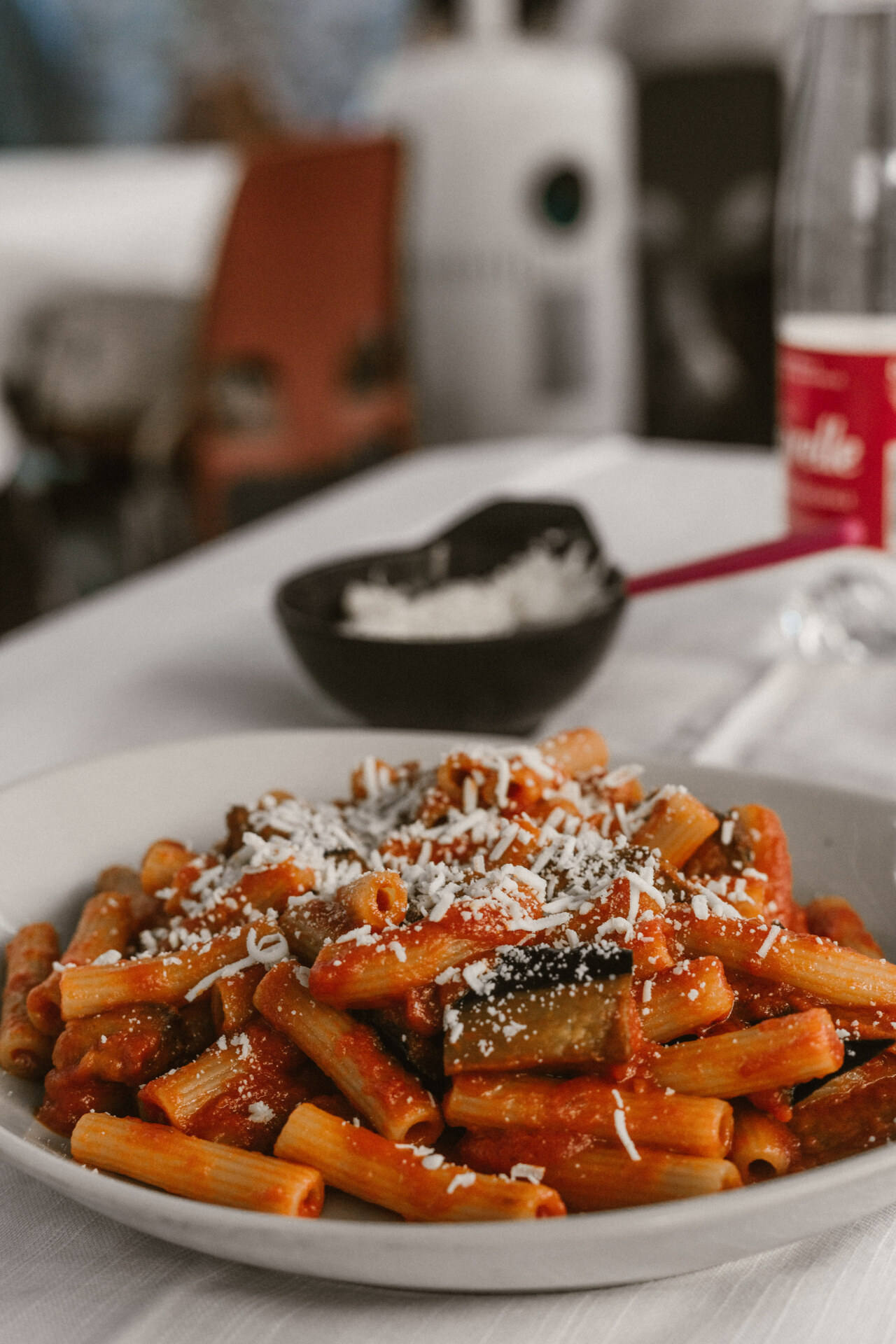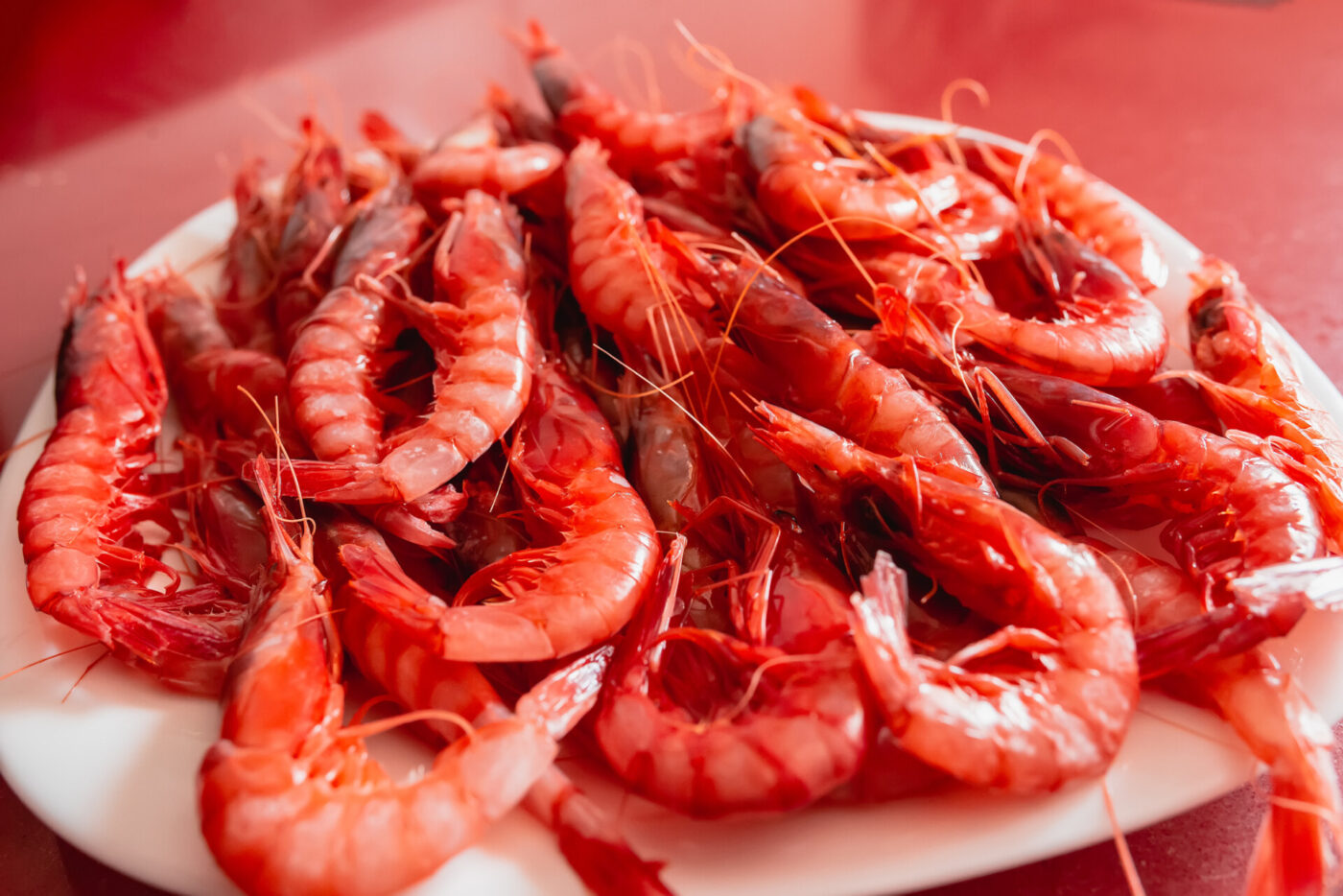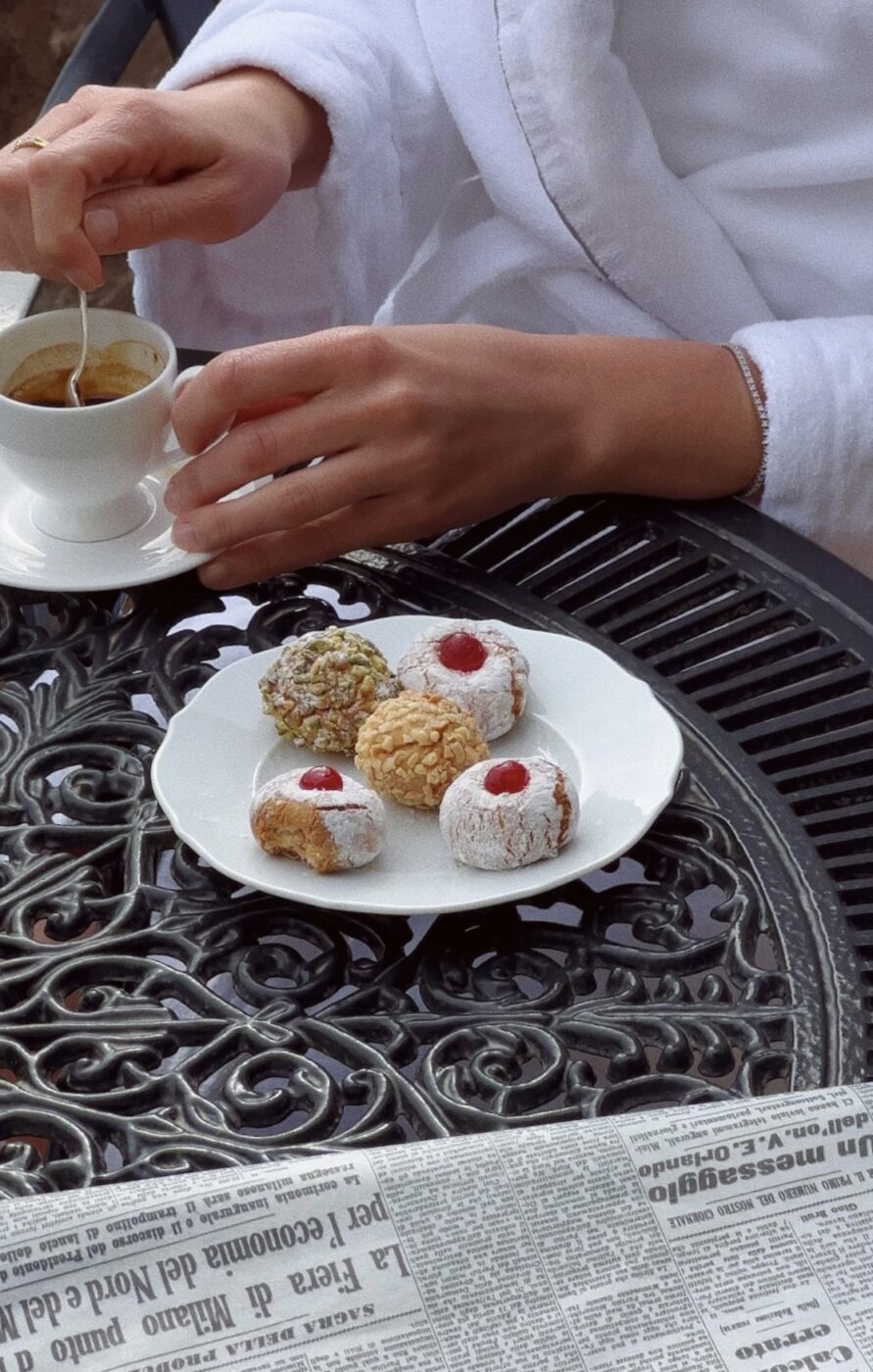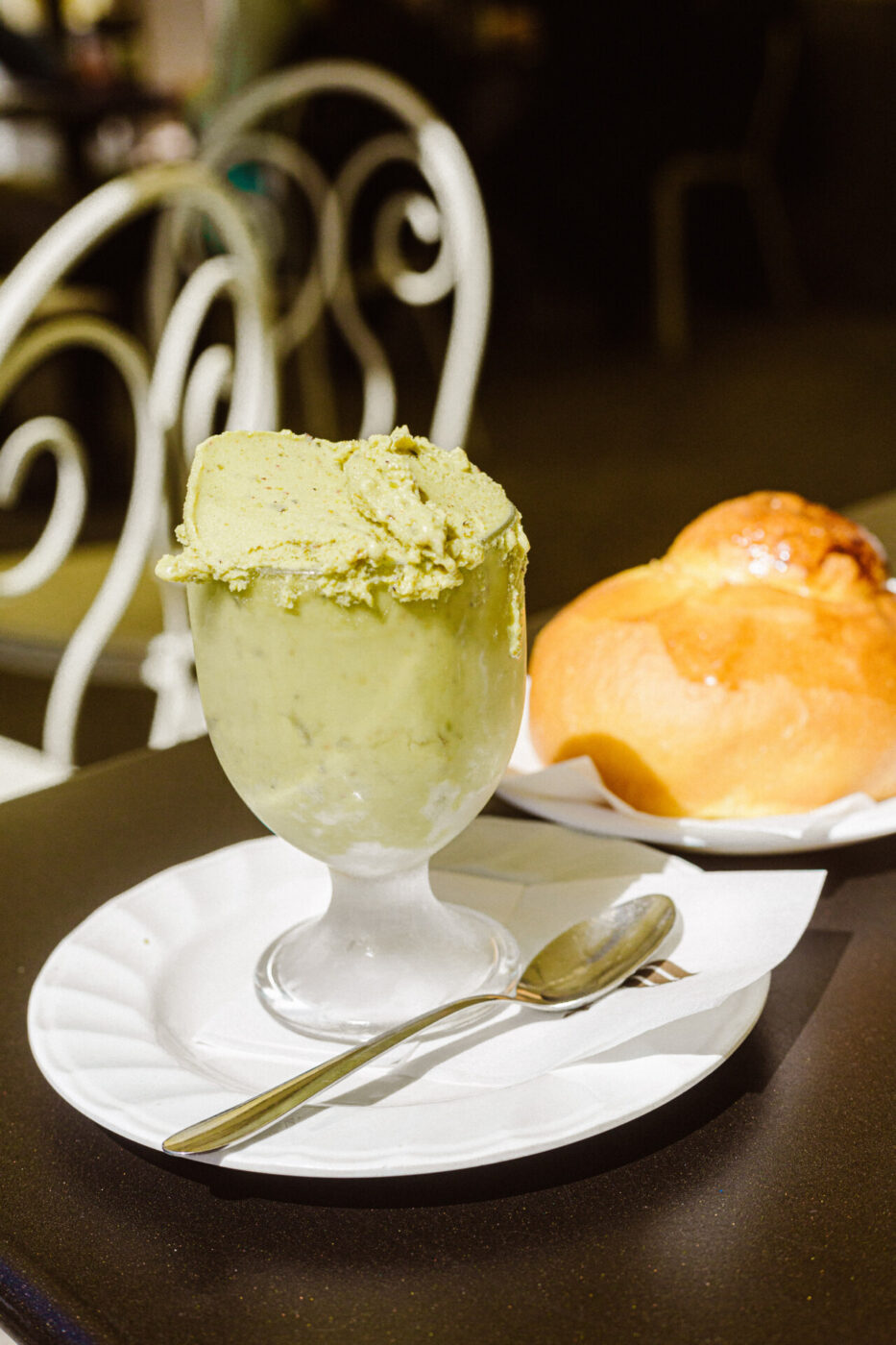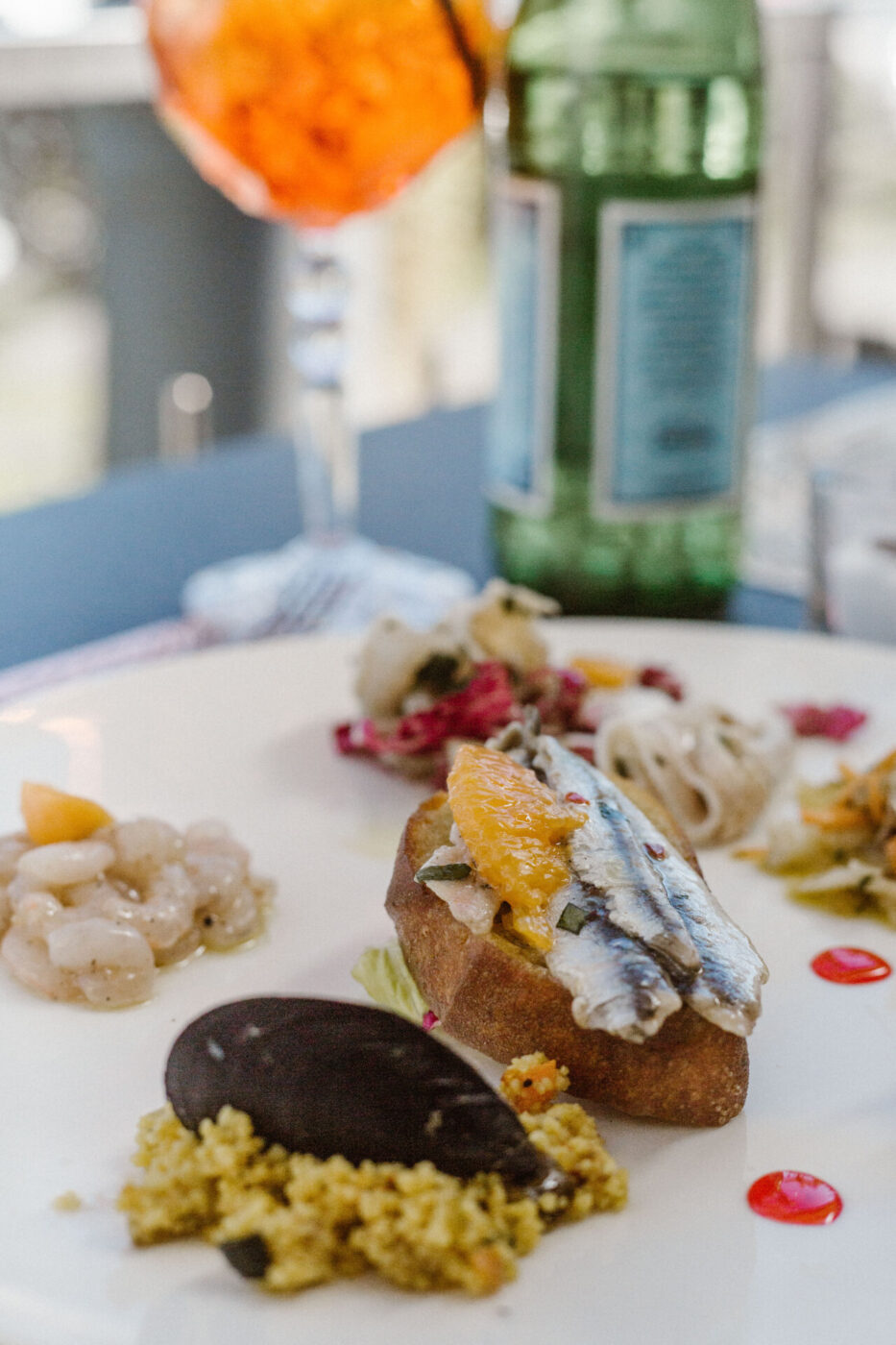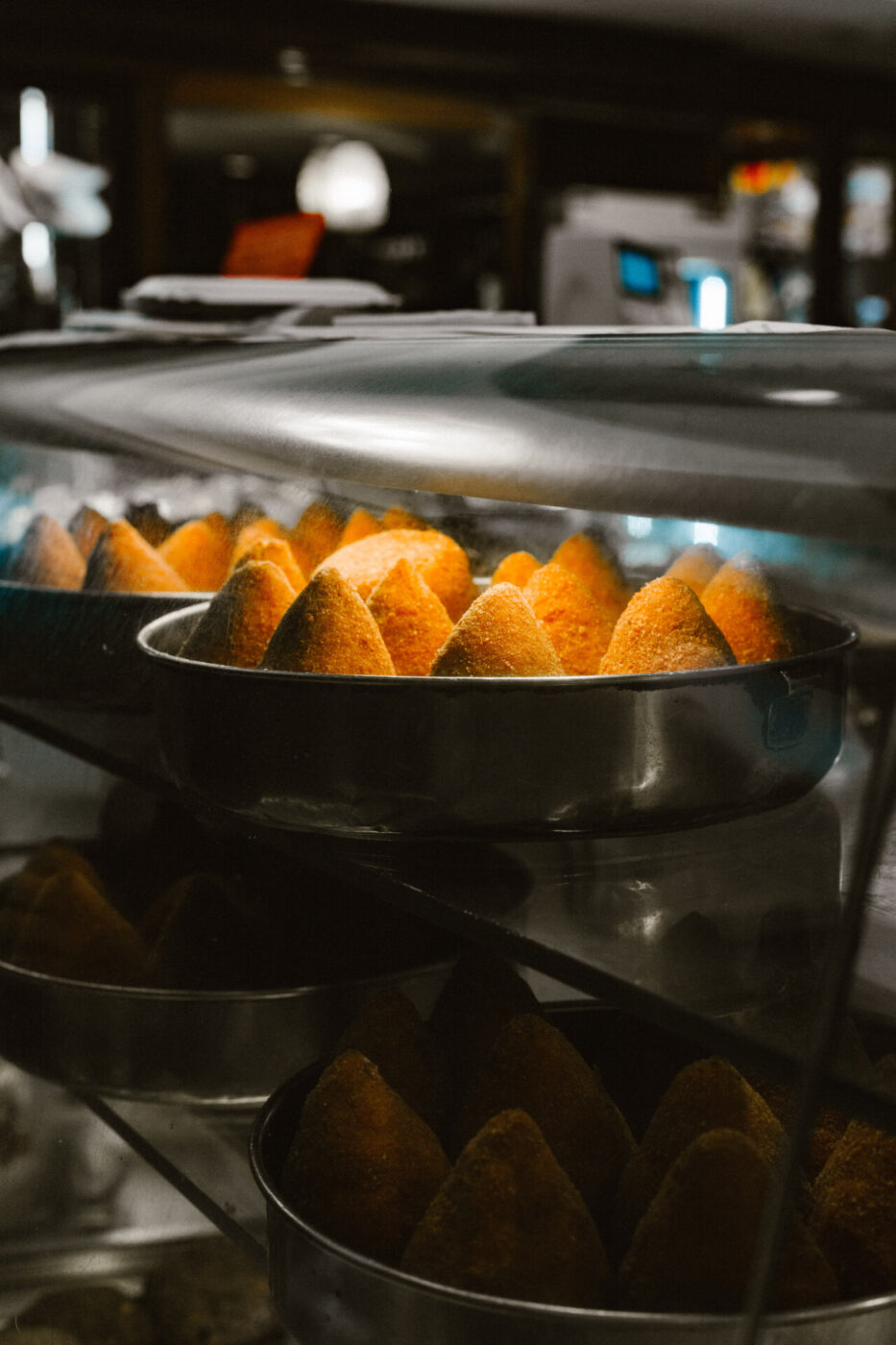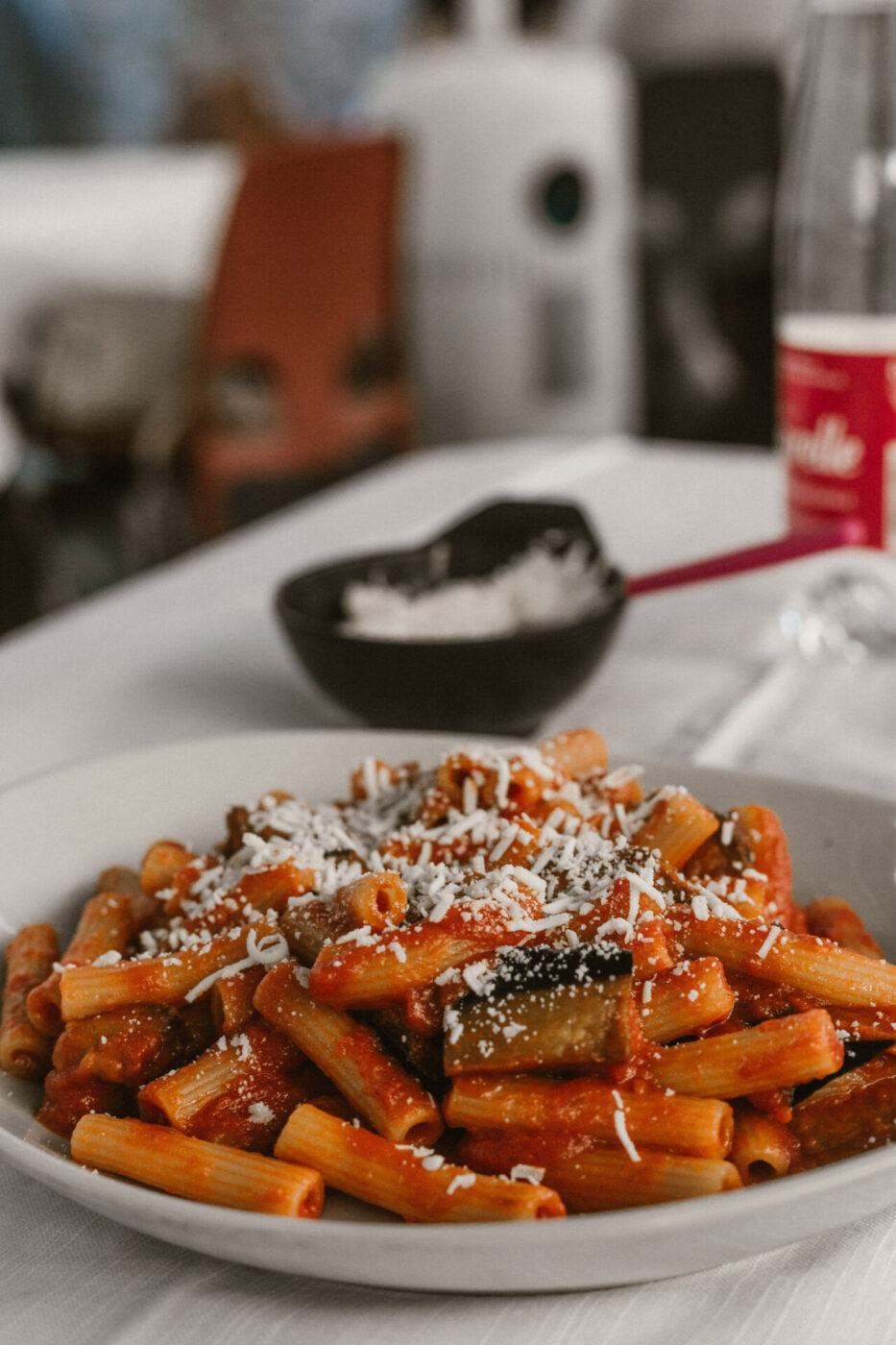There are many reasons to visit Sicily, but the food just might be the most compelling one. The island’s many waves of occupation under Arab, Norman, and Spanish rule, combined with its fertile land, volcanic soils, and surrounding sea make for a diverse and extremely delicious culinary tradition. We could fill a whole issue with dishes to try here, but for the sake of everybody’s attention span we’ve narrowed it down to our top 20.
Ricotta
Not all ricottas are created equal, a fact that becomes evident upon your first taste of Sicilian ricotta, best served warm, custardy, and cloud-like, fresh from the cheesemaker’s fuscella. Ricotta can be found in many forms and functions here, from sweet iterations used in desserts like cannoli and cassata, to aged and salted and sprinkled on top of pasta alla Norma. Eat it as often and in as many variations as you can.
Granita & Brioche
Granita’s foremother was born in Sicily during the time of the Arab occupation–in the Middle Ages, they made “frozen waters” from water infused with sugar and spices, set to cool over ice with salt. Today, granita is the ultimate refreshing snack, made even better when sandwiched inside a pillowy brioche bun. If you don’t order the granita al pistacchio di Bronte and/or granita al mandorle, our founder will find you and give you a very scary scolding. Pair either with a fruity flavor like gelso (mulberry) or limone (lemon) to offset the richness. Served like this, it’s a perfectly acceptable breakfast.
Pasta alla Norma
First served up in Catania and named after the city’s favorite opera, pasta alla Norma showcases three stars of Sicilian gastronomy–tomatoes, eggplant, and ricotta salata. The tomatoes are cooked down and milled into a sauce, eggplant is fried until melt-in-your-mouth soft, and ricotta salata is sprinkled on top with a few leaves of basil. We also happen to have a recipe.
Cassata
Traditionally served at Easter, this is one for those of you with a superhuman-level sweet tooth. Fluorescent green marzipan is wrapped around a filling of sweet ricotta, which sits atop a syrupy, almond-y sponge cake. The whole thing is adorned in a Baroque opulent style with glacée fruits and a Maraschino cherry on top.
Cannoli
Maybe Sicily’s most beloved export, cannoli are fried tubes of dough, filled with sweet ricotta, sometimes studded with chocolate chips, and sprinkled with pistachio. Our hot tip: steer clear of the pre-filled ones, which tend to get soggy as they sit in the refrigerator, and instead have the pasticceria pipe the ricotta in fresh for you so the pastry stays perfectly crispy–it should shatter a bit with every bite.

Pasta con le sarde
Pasta con le sarde–pasta with sardines–is a testament to Sicily’s waves of occupation, served twirled around strands of spaghetti or bucatini. Sardines and wild fennel exemplify the rich local bounty, while saffron, pine nuts, and raisins evoke Arab cooking, all playing their role to conjure up the multifaceted tastes of Sicily.
Arancini
The reigning monarch of Sicilian street food, arancini (singular arancina in Palermo or arancino in Catania), is a conical ball of fried rice, served just about everywhere here. The two most popular iterations are al burro–wherein the rice is made with butter, saffron, prosciutto, mozzarella, and bechamel–and al ragu, which is stuffed with tomato-and meat ragu, peas, and salty caciocavallo cheese.
Panelle
Another popular fried snack on the Sicilian streets, panelle is a chickpea flour fritter served sandwiched between soft bread rolls, and handed out wrapped in paper from the market stalls where they’re prepared piping hot.
Pani ca meusa
Sicilians–like so many other regions in Italy–have known long periods of poverty throughout their storied history, a fact which has led to a necessary appreciation for using all parts of the animal. Palermo’s pani ca meusa is a prime example of how tasty cucina povera can be: veal trachea, spleen, and lung is crisped up in lard and served with a squeeze of lemon as a sandwich, sometimes with ricotta (pani ca meusa maritata).
Gamberi Rossi di Mazara
Mazara’s prized red prawns are so beautiful that they really shouldn’t be eaten any other way than raw, with a drizzle of olive oil and maybe a squeeze of lemon if you’re feeling crazy. The coral-red color and buttery-sweet taste make this delicacy every bit worth the sometimes steep price. Mazara is a powerhouse of seafood, being home to the second largest fishing industry on the continent, so head here if you want to try the freshest of catches.
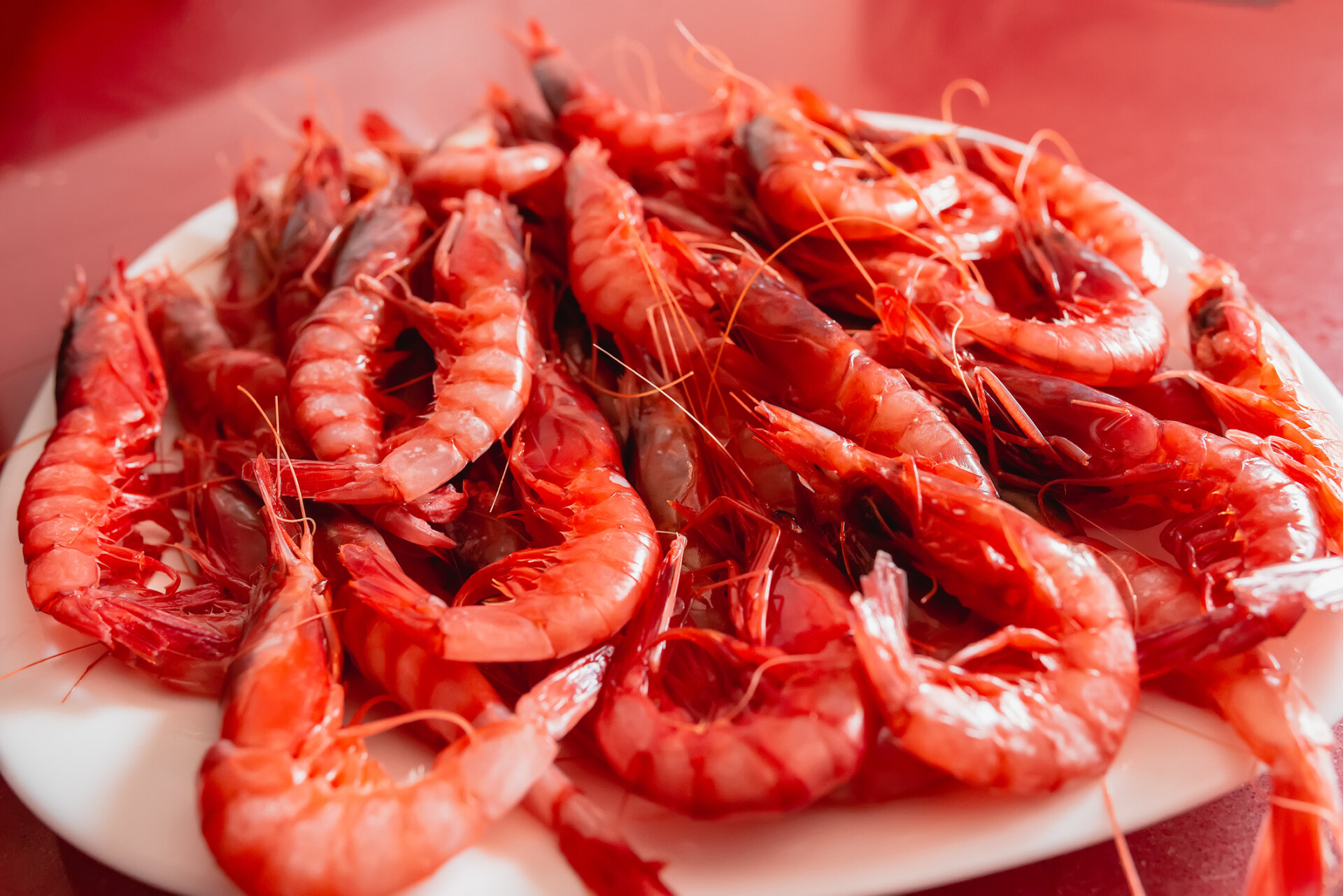
Insalata di arance e finocchi (Orange and fennel salad)
Although this refreshing salad can be happily eaten year-round, it’s especially good in the cooler months, when citrus and fennel are at their peak. Oranges and fennel are two backbones of Sicilian produce–wander around the island and you’ll see both growing just about everywhere. Sliced black olives (optional) add a saline kick, a good glug of extra virgin olive oil rounds it all out.
Caponata
Caponata is perhaps the most beloved recipe pivot to come out of cucina povera. The dish is named after the Spanish word capone, a fish that used to star in this recipe in lieu of eggplant. Due to cost of living increases (relatable) and growing poverty, most Sicilians were unable to afford capone, and replaced it with eggplant, rounding out the tangy trifecta of tomatoes and olives, brightened up with a splash of vinegar.
Horse Meat
When you consider the longstanding tradition of using horses as work animals, both for transport, manpower, and sport, and the economic necessity of not letting anything good and edible go to waste, it makes perfect sense that eating horse meat has been part of Sicilian custom for centuries. Horses are never reared for their meat here, but rather butchered after a long life of being ridden and cared for, and the result is delicious–and fairly ethical. Due to high levels of iron and a lean composition, it’s often recommended to pregnant folks and anybody who’s ailing and needs a reviver. In Catania, the incredibly tender meat is commonly served raw, as tartare, though you can also find it as steaks, burgers, etc.
Couscous Alla Trapanese
Trapani can thank its Arab colonizers–as well as the many North African migrants who have made their homes here since that time–for bringing couscous to the island. Couscous alla Trapanese is perhaps the pinnacle of the fusion between Berber and Italian cuisine: semolina-based couscous and seafood are steamed in a broth made of warm spices like cinnamon and cloves, garlic, bay leaf, almonds, and tomato. When in Trapani, try to find places that make their couscous from scratch–it’s a painstaking process but entirely worth it.
Pesto Alla Trapanese
Another highly delicious item to come out of Trapani, pesto alla Trapanese is different but equal to its more well-known, Ligurian counterpart. Where the famed green Genovese pesto is made from basil, garlic, pine nuts, and olive oil crushed in a mortar and pestle, the Trapanese version subs pine nuts for almonds and throws tomatoes into the mix. The result is a coarse, fragrant, and brightly acidic pesto.
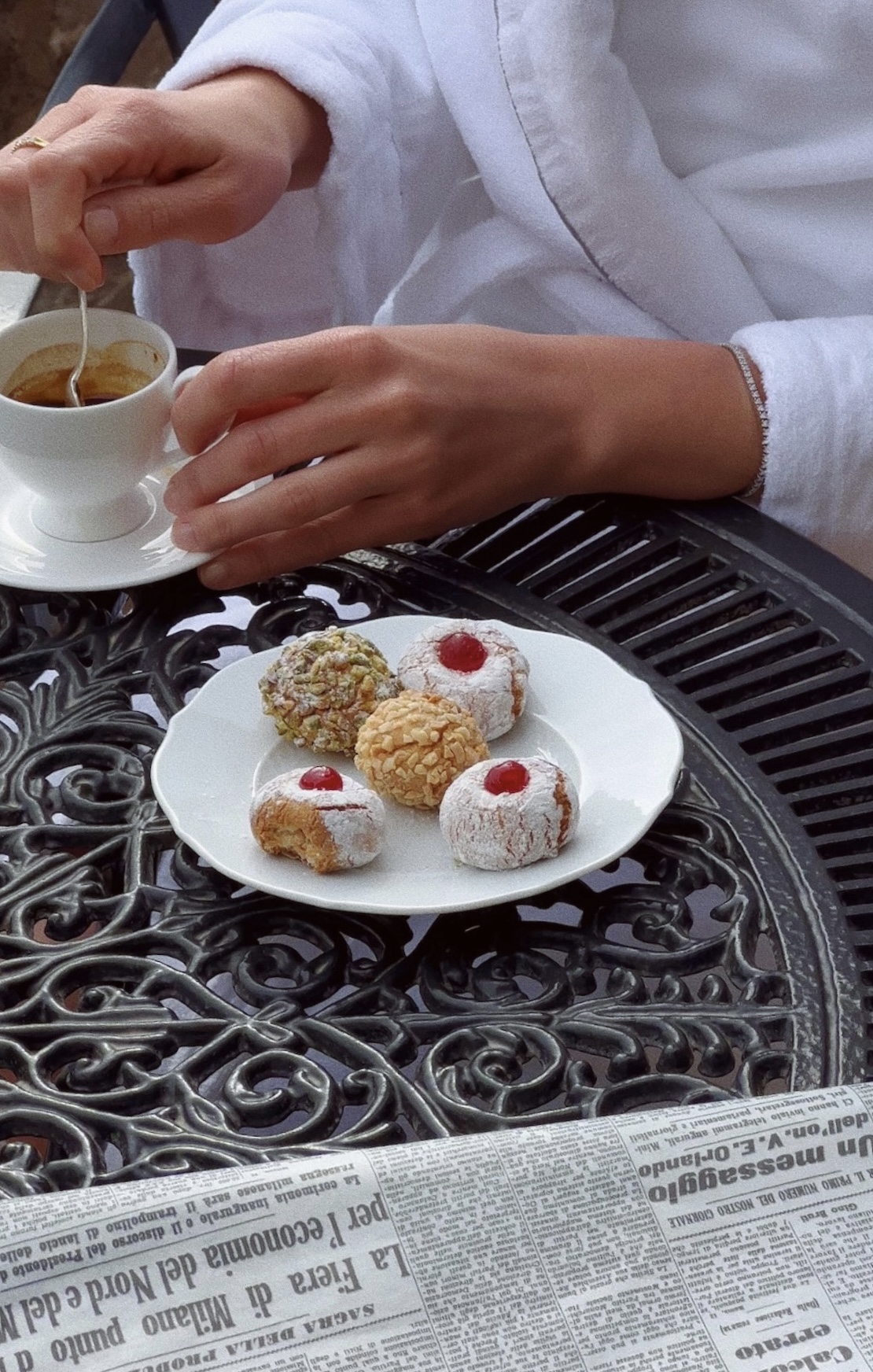
Paste di Mandorle
In the 6th century, the Arabs brought sugar to Sicily. Five years later, they added another hit to the island’s gastronomic canon: almonds. Put the two together and you have many confectionery treats for which Sicily has now become renowned, from ornate marzipan fruits to cassata to paste di mandorle. These small round or S-shaped cookies, made of almond paste dough and adorned with a maraschino cherry or whole almond, are native to Palermo but can be found at just about any Sicilian bakery.
Pasta Al Pistacchio
Pistachio di Bronte are, quite simply, superior to every other nut on the planet. Swirled in bright green with streaks of pink, these beauties are fragrant, sweet, and buttery tasting, owing to the rich fertile soils of the Etnean hills from which they hail. While they are used in many applications throughout the island, from the sweet crema di pistachio spread to savory pestos, pasta al pistacchio is another lesson in the beauty of simplicity: the sauce is just pistachios, crushed into a coarse granular powder, olive oil, and a dollop of stracciatella or ricotta. It can be found in Catania and all around the Etna region.
Pasta alla Carrettiera
If ever there was an argument for less is more, pasta alla carrettiera is it. The perennial crowd pleaser is made with olive oil, garlic, crushed red pepper chili flakes, and parsley, sprinkled with pecorino and toasted pangrattato. Tomatoes are very often added. Basta cosi. The name is an ode to the carrettiere–wagoners–who transported dried goods and spices all over the island. They made this pasta with the supplies they had on hand in the morning, and then packed it as their lunches for the day to eat en route.
Sfincione
The best way to anger an Italian is to infer that all our regional variations on dough with tomato sauce and cheese are, in fact, variations on pizza. In stark contrast to pizza rossa from Rome, for example, sfincione is a sheet-pan focaccia, topped with crushed tomato, olive oil, anchovies, and caciocavallo cheese. It’s distinctly Palermitan and distinctly delicious.
Spiedini Alla Palermitana
Spiedini–also known as involtini–are an especially popular format of stuffed, rolled, and skewered secondi, found everywhere in Sicily and throughout Italy. The Palermitan version is probably our favorite though: veal backstrap is wrapped around a filling of pine nuts, sultanas, red onion, and pecorino, before the whole thing is rolled in breadcrumbs and grilled.



